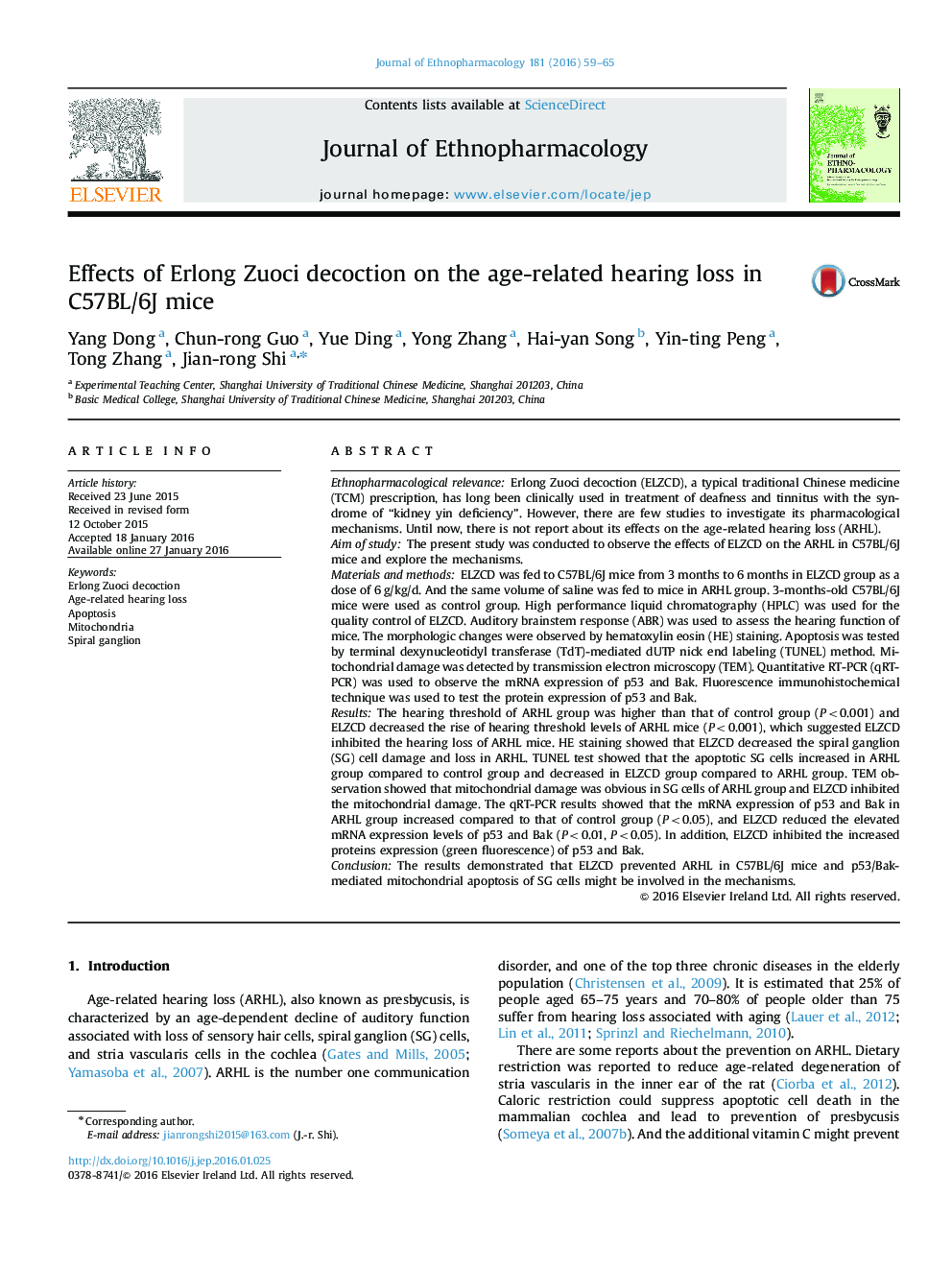| Article ID | Journal | Published Year | Pages | File Type |
|---|---|---|---|---|
| 2544806 | Journal of Ethnopharmacology | 2016 | 7 Pages |
Ethnopharmacological relevanceErlong Zuoci decoction (ELZCD), a typical traditional Chinese medicine (TCM) prescription, has long been clinically used in treatment of deafness and tinnitus with the syndrome of “kidney yin deficiency”. However, there are few studies to investigate its pharmacological mechanisms. Until now, there is not report about its effects on the age-related hearing loss (ARHL).Aim of studyThe present study was conducted to observe the effects of ELZCD on the ARHL in C57BL/6J mice and explore the mechanisms.Materials and methodsELZCD was fed to C57BL/6J mice from 3 months to 6 months in ELZCD group as a dose of 6 g/kg/d. And the same volume of saline was fed to mice in ARHL group. 3-months-old C57BL/6J mice were used as control group. High performance liquid chromatography (HPLC) was used for the quality control of ELZCD. Auditory brainstem response (ABR) was used to assess the hearing function of mice. The morphologic changes were observed by hematoxylin eosin (HE) staining. Apoptosis was tested by terminal dexynucleotidyl transferase (TdT)-mediated dUTP nick end labeling (TUNEL) method. Mitochondrial damage was detected by transmission electron microscopy (TEM). Quantitative RT-PCR (qRT-PCR) was used to observe the mRNA expression of p53 and Bak. Fluorescence immunohistochemical technique was used to test the protein expression of p53 and Bak.ResultsThe hearing threshold of ARHL group was higher than that of control group (P<0.001) and ELZCD decreased the rise of hearing threshold levels of ARHL mice (P<0.001), which suggested ELZCD inhibited the hearing loss of ARHL mice. HE staining showed that ELZCD decreased the spiral ganglion (SG) cell damage and loss in ARHL. TUNEL test showed that the apoptotic SG cells increased in ARHL group compared to control group and decreased in ELZCD group compared to ARHL group. TEM observation showed that mitochondrial damage was obvious in SG cells of ARHL group and ELZCD inhibited the mitochondrial damage. The qRT-PCR results showed that the mRNA expression of p53 and Bak in ARHL group increased compared to that of control group (P<0.05), and ELZCD reduced the elevated mRNA expression levels of p53 and Bak (P<0.01, P<0.05). In addition, ELZCD inhibited the increased proteins expression (green fluorescence) of p53 and Bak.ConclusionThe results demonstrated that ELZCD prevented ARHL in C57BL/6J mice and p53/Bak-mediated mitochondrial apoptosis of SG cells might be involved in the mechanisms.
Graphical abstractFigure optionsDownload full-size imageDownload high-quality image (178 K)Download as PowerPoint slide
